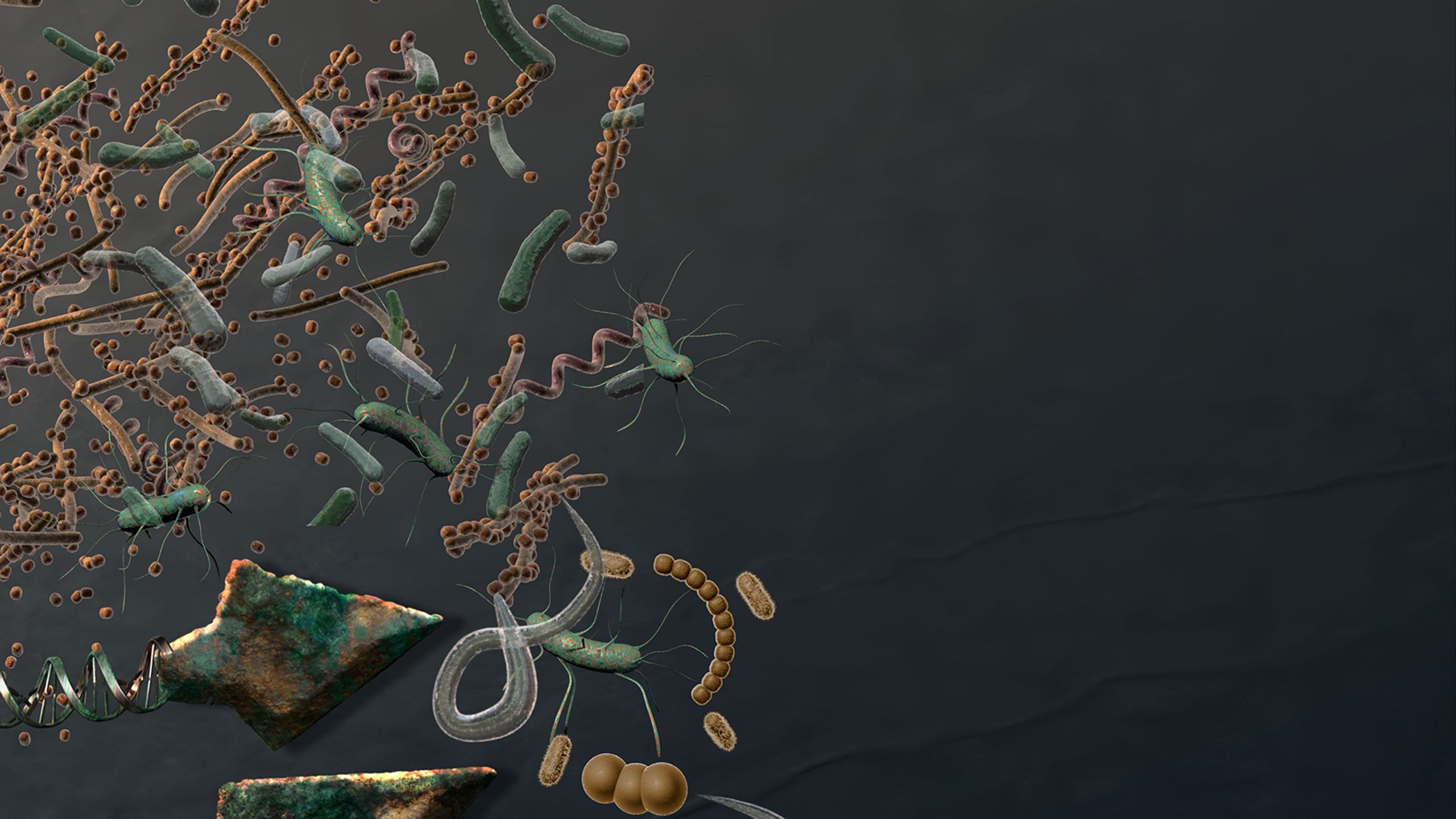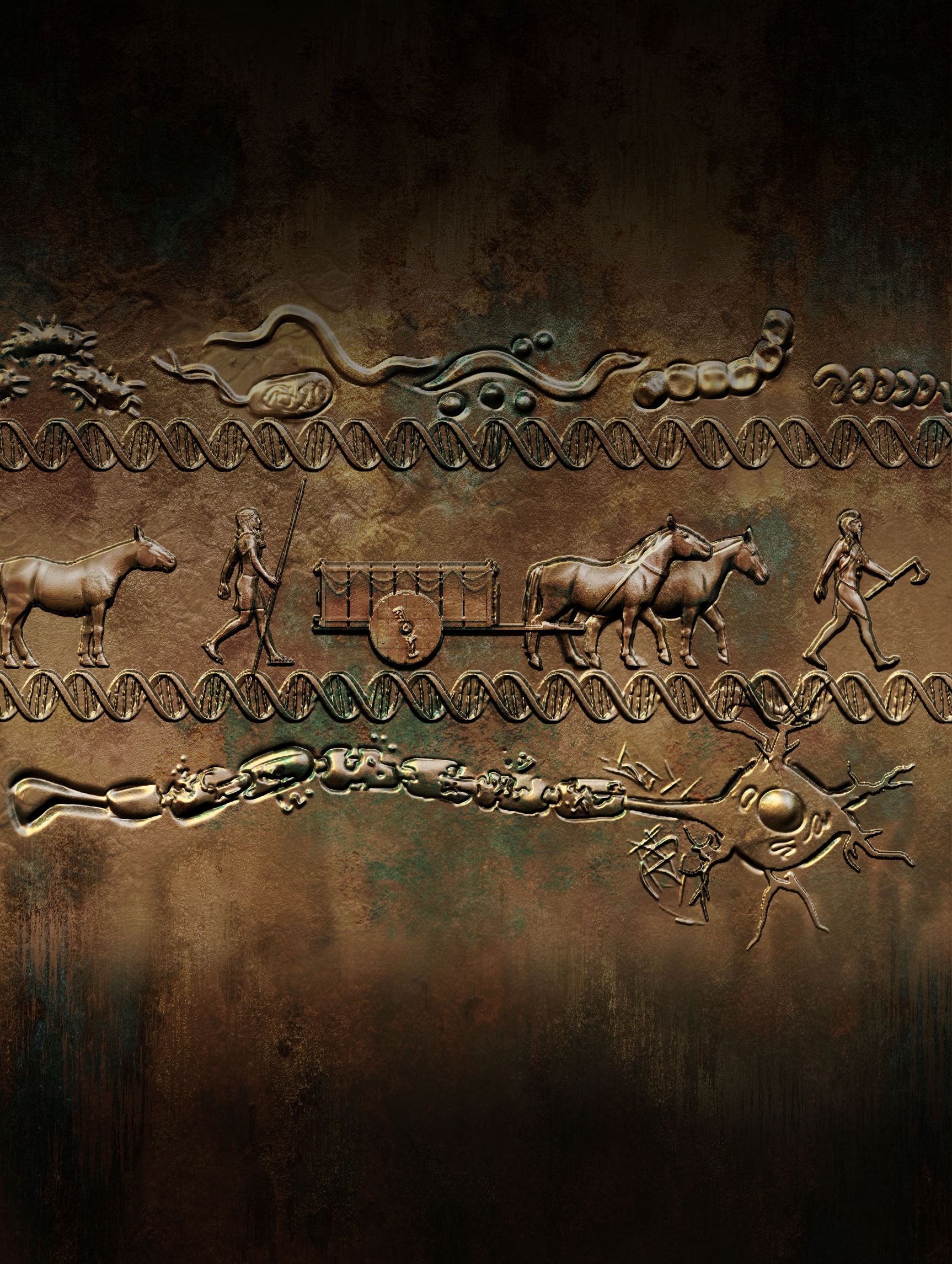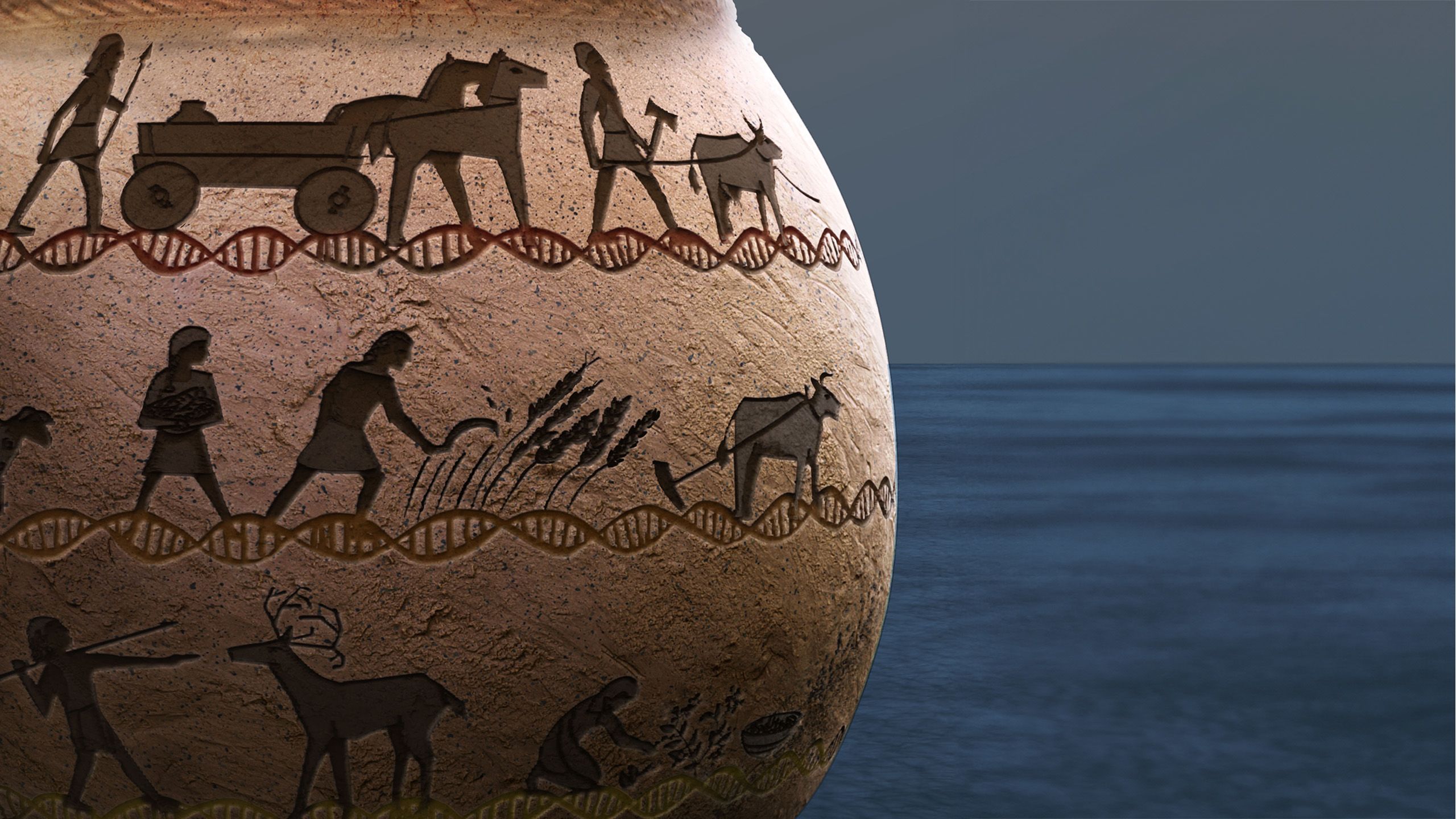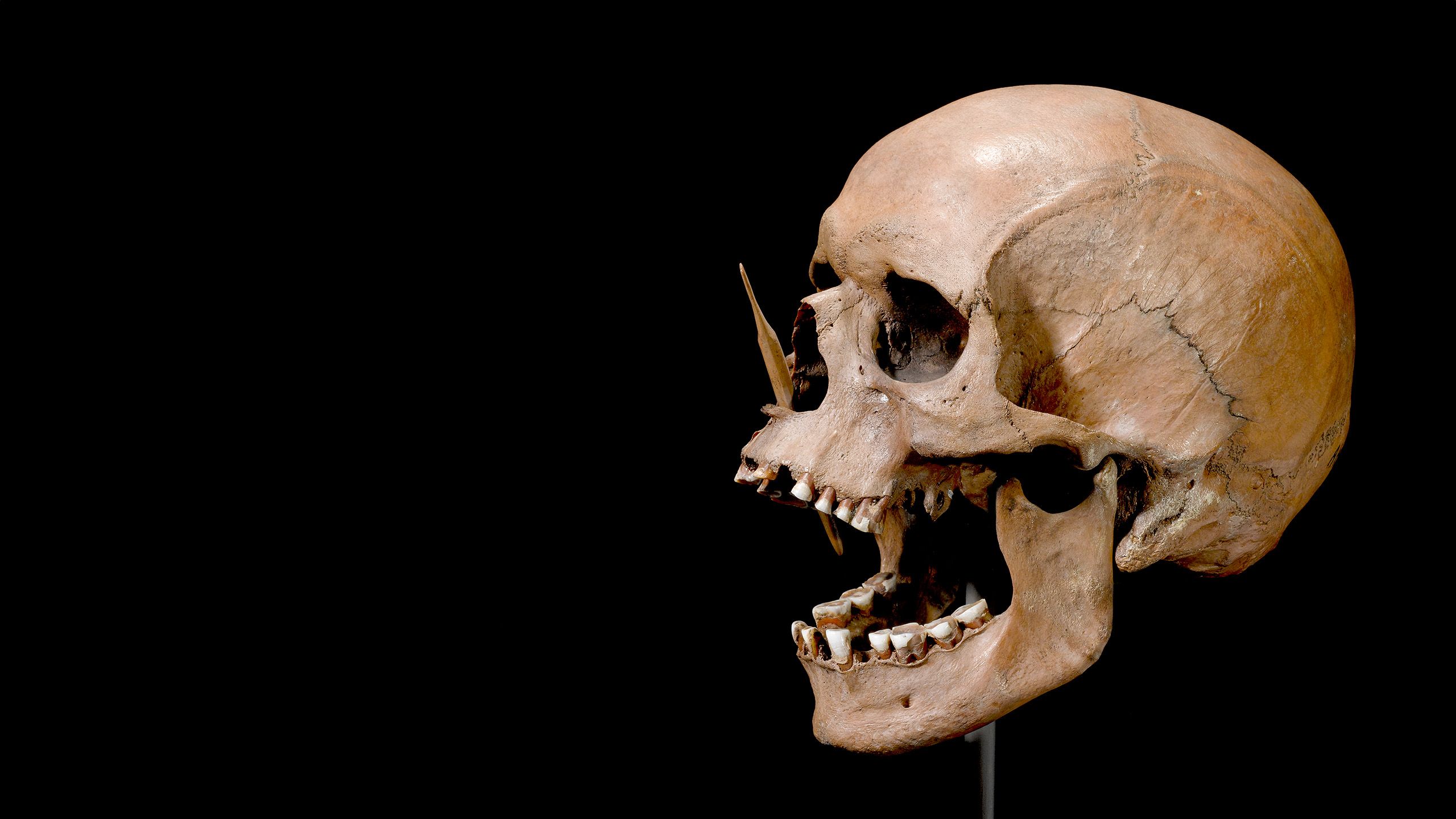Ancient DNA reveals reason for high MS and Alzheimer’s rates in Europe

Researchers have created the world’s largest ancient human gene bank by analysing the bones and teeth of almost 5,000 humans who lived across western Europe and Asia up to 34,000 years ago.
By sequencing ancient human DNA and comparing it to modern-day samples, the international team of experts mapped the historical spread of genes – and diseases – over time as populations migrated.
The ‘astounding’ results have been revealed in four trailblazing papers published today in the journal Nature and provide new biological understanding of debilitating disorders.
The study involved a large international team led by Professor Eske Willerslev at the Universities of Cambridge and Copenhagen, Professor Thomas Werge at the University of Copenhagen, and Professor Rasmus Nielsen at University of California, Berkeley, with contributions from 175 researchers from around the globe. They found:
- The origins of neurodegenerative diseases including multiple sclerosis
- Why northern Europeans today are taller than people from southern Europe
- How major migration around 5,000 years ago introduced risk genes into the population in north-western Europe – leaving a legacy of higher rates of MS today
- Carrying the MS gene was an advantage at the time as it protected ancient farmers from catching infectious diseases from their sheep and cattle
- Genes known to increase the risk of diseases such as Alzheimer’s and type 2 diabetes were traced back to hunter gatherers
Future analysis is hoped to reveal more about the genetic markers of autism, ADHD, schizophrenia, bipolar disorder, and depression.
Northern Europe has the highest prevalence of multiple sclerosis in the world.
The new study found the genes that significantly increase a person’s risk of developing multiple sclerosis (MS) were introduced into north-western Europe around 5,000 years ago by sheep and cattle herders migrating from the east.
By analysing the DNA of ancient human bones and teeth, found at documented locations across Eurasia, researchers traced the geographical spread of MS from its origins on the Pontic Steppe (a region spanning parts of what are now Ukraine, South-West Russia and the West Kazakhstan Region).
They found that the genetic variants associated with a risk of developing MS ‘travelled’ with the Yamnaya people - livestock herders who migrated over the Pontic Steppe into North-Western Europe.
These genetic variants provided a survival advantage to the Yamnaya people, most likely by protecting them from catching infections from their sheep and cattle. But they also increased the risk of developing MS.
“It must have been a distinct advantage for the Yamnaya people to carry the MS risk genes, even after arriving in Europe, despite the fact that these genes undeniably increased their risk of developing MS.
These results change our view of the causes of multiple sclerosis and have implications for the way it is treated.”
Professor Eske Willerslev, jointly at the Universities of Cambridge and Copenhagen, Fellow of St John’s College, expert in analysis of ancient DNA and Director of the project.

The age of specimens ranges from the Mesolithic and Neolithic through the Bronze Age, Iron Age and Viking period into the Middle Ages. The oldest genome in the data set is from an individual who lived approximately 34,000 years ago.
The findings provide an explanation for the ‘North-South Gradient’, in which there are around twice as many modern-day cases of MS in northern Europe than southern Europe, which has long been a mystery to researchers.
From a genetic perspective, the Yamnaya people are thought to be the ancestors of the present-day inhabitants of much of North-Western Europe. Their genetic influence on today’s population of southern Europe is much weaker.
Previous studies have identified 233 genetic variants that increase the risk of developing MS. These variants, also affected by environmental and lifestyle factors, increase disease risk by around 30 percent. The new research found that this modern-day genetic risk profile for MS is also present in bones and teeth that are thousands of years old.
“These results astounded us all. They provide a huge leap forward in our understanding of the evolution of MS and other autoimmune diseases.
Showing how the lifestyles of our ancestors impacted modern disease risk just highlights how much we are the recipients of ancient immune systems in a modern world.”
Dr William Barrie, postdoc in the University of Cambridge’s Department of Zoology and first author of the MS study.
Multiple sclerosis is a neurodegenerative disease in which the body’s immune system mistakenly attacks the ‘insulation’ surrounding the nerve fibres of the brain and spinal cord. This causes symptom flares known as relapses as well as longer-term degeneration, known as progression.

Professor Lars Fugger, a co-author of the MS study and professor and consultant physician at John Radcliffe Hospital, University of Oxford, said: “This means we can now understand and seek to treat MS for what it actually is: the result of a genetic adaptation to certain environmental conditions that occurred back in our prehistory.”
Professor Astrid Iversen, another co-author based at the University of Oxford, said: “We now lead very different lives to those of our ancestors in terms of hygiene, diet, and medical treatment options and this combined with our evolutionary history means we may be more susceptible to certain diseases than our ancestors were, including autoimmune diseases such as MS.”
The Lundbeck Foundation GeoGenetics Centre – the resource underpinning the discoveries
The new findings were made possible by the analysis of data held in a unique gene bank of ancient DNA, created by the researchers over the past five years with funding from the Lundbeck Foundation.
This is the first gene bank of its kind in the world and already it has enabled fascinating new insights in areas from ancient human migrations, to genetically-determined risk profiles for the development of brain disorders.
By analysing the bones and teeth of almost 5,000 ancient humans, held in museum collections across Europe and Western Asia, the researchers generated DNA profiles ranging across the Mesolithic and Neolithic through the Bronze Age, Iron Age and Viking period into the Middle Ages. They compared the ancient DNA data to modern DNA from 400,000 people living in Britain, held in the UK Biobank.
“Creating a gene bank of ancient DNA from Eurasia’s past human inhabitants was a colossal project, involving collaboration with museums across the region,” said Willerslev. He added:
“We’ve demonstrated that our gene bank works as a precision tool that can give us new insights into human diseases, when combined with analyses of present-day human DNA data and inputs from several other research fields.
That in itself is amazing, and there’s no doubt it has many applications beyond MS research.”
The team now plans to investigate other neurological conditions including Parkinson’s and Alzheimer’s diseases, and psychiatric disorders including ADHD and schizophrenia.
They have received requests from disease researchers across the world for access to the ancient DNA profiles, and eventually aim to make the gene bank open access.

References
(1) Barrie, W. et al.: ‘Elevated Genetic Risk for Multiple Sclerosis Originated in Steppe Pastoralist Populations.’ Nature, January 2024. DOI: 10.1038/s41586-023-06618-z
(2) Irving-Pease, E.K. et al. ‘The Selection Landscape and Genetic Legacy of Ancient Eurasians.’ Nature, January 2024. DOI: 10.1038/s41586-023-06705-1
(3) Allentoft, M.E. et al. ‘Population Genomics of Postglacial Western Eurasia.’ Nature, January 2024. DOI: 10.1038/s41586-023-06865-0
(4) Allentoft, M.E. et al. ’100 Ancient Genomes Show Repeated Population Turnovers in Neolithic Age Denmark.’ Nature, January 2024. DOI: 10.1038/s41586-023-06862-3
The research was funded by a €8M grant from the Lundbeck Foundation, and conducted at the Lundbeck Foundation GeoGenetics Centre at the University of Copenhagen.
Jan Egebjerg, Director of Research at the Lundbeck Foundation, said: "The Foundation focuses on brain disorders, and we wanted to support a trail-blazing means of gaining a deeper understanding into how the genetic architecture underlying brain disorders evolved over time."
The text in this work is licensed under a Creative Commons Attribution-NonCommercial-ShareAlike 4.0 International License
Further findings from the ancient gene bank
Physical traits and disease risks of modern-day Europeans
“It’s striking that the lifestyles of the people in the Eurasian region over the last 10,000 years have resulted in a genetic legacy that impacts their present-day descendants, in terms of both their physical appearance and their risk of developing a number of diseases,” said Dr Evan Irving-Pease at The Globe Institute, University of Copenhagen, first author of Nature paper (2).
By comparing DNA from 1,664 archaeological skeletons of the prehistoric inhabitants of the Eurasia - ranging in age from the Mesolithic (Middle Stone Age) to around 1,000 BC - to over 400,000 DNA profiles from present-day Europeans, the team has gained a host of new insights into our genetic histories, including:
Body height: North-Western Europeans today are typically taller than Southern Europeans - a genetic predisposition to being tall is likely to have come from the Yamnaya.
Disease risk: Influenced by how much DNA a person has from the ancient populations that migrated across Eurasia after the last Ice Age. For example, Southern Europeans typically have a lot of ancient farmer DNA and are genetically predisposed to developing bipolar disorder. North-Western Europeans carry more genetic risk for multiple sclerosis, while Eastern Europeans have an increased genetic risk of developing Alzheimer’s and type 2 diabetes.
Lactose tolerance: DNA analysis of the prehistoric inhabitants of the Eurasia has revealed that lactose tolerance - the ability to digest the sugar in milk and other dairy products – emerged in Europe around 6,000 years ago.
Vegetable tolerance: The ability to better survive on a vegetable-rich diet was written into Europeans’ genes by the dawn of the Neolithic Age, around 5,900 years ago.
Past human gene pools of western Eurasia
In Nature paper (3) the researchers including Morten Allentoft, Professor at Curtin University, Australia and Lundbeck Foundation GeoGenetics Centre at UCPH, Martin Sikora, Associate Professor at the Lundbeck Foundation GeoGenetics Centre at UCPH, and Kristian Kristiansen, Professor of Archaeology at the University of Gothenburg, Sweden, show that genetic differences between ancient populations in western Eurasia were substantially higher than previously estimated, and also much higher than observed in present-day populations.
Origins of modern-day Danes
In Nature paper (4) the team reports findings that overturn the commonly-held view that the ancestors of present-day Danes were Stone Age hunter-gatherers.
The team, including Professor Kristian Kristiansen and Dr Anders Fischer, both affiliated with the Lundbeck Foundation GeoGenetics Centre at UCPH, analysed DNA from 100 skeletons of the prehistoric inhabitants of the region now known as Denmark, who lived between 10,000 years ago and 2,700 years ago.
They found that since the last Ice Age around 12,000 years ago, Denmark has experienced two near-total population turnover events, the second of which is still evident in the gene pool of present-day Scandinavia.
Around 5,900 years ago at the dawn of the Neolithic Age, a group of farmers with genetic roots in Anatolia - the Asian part of present-day Turkey – brought a new farming culture to Denmark. The resulting changes in diet were clear in analysis of the ancient bones, and show that these farmers completely replaced the hunter-gatherers living in the region.
Then, around 5,000 years ago, the Yamnaya arrived and eliminated the Anatolian farmers. The Yamnaya people are the closest ancestors of present-day ethnic Danes.

